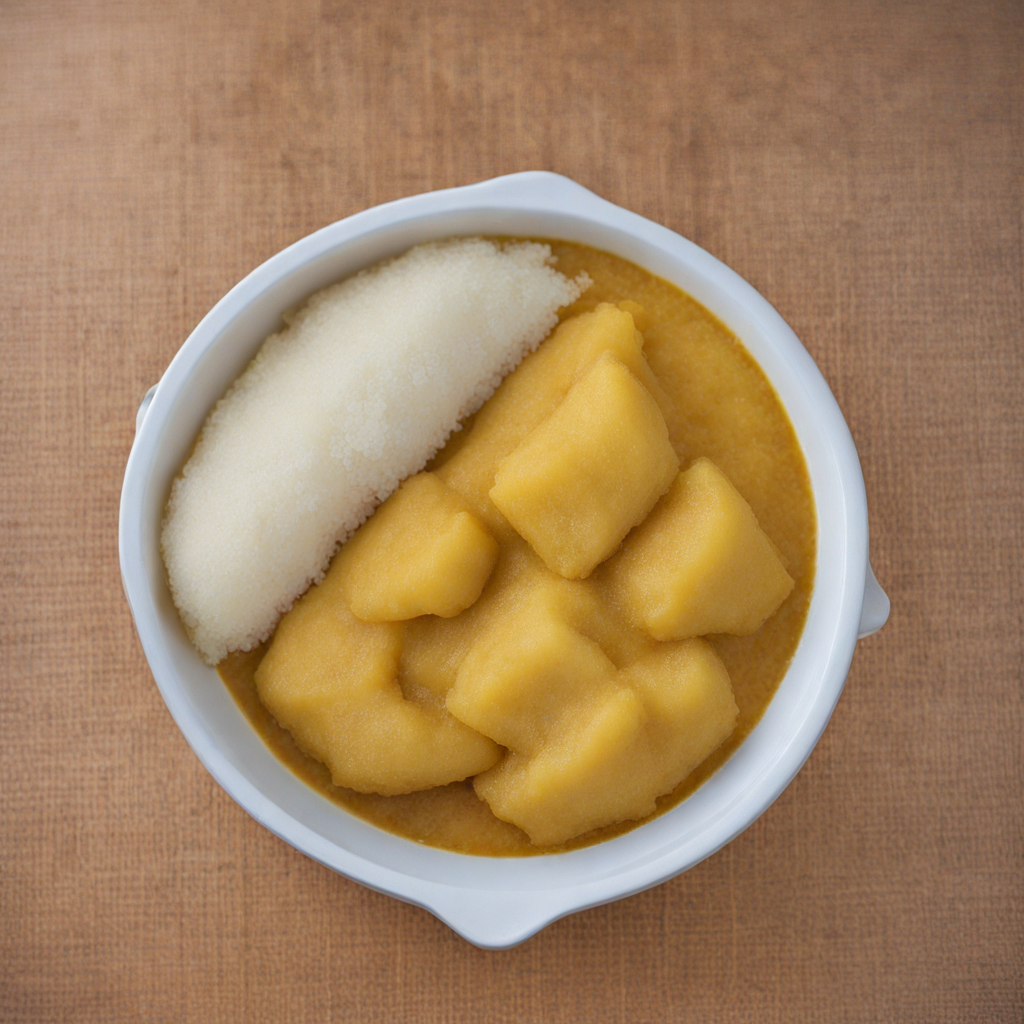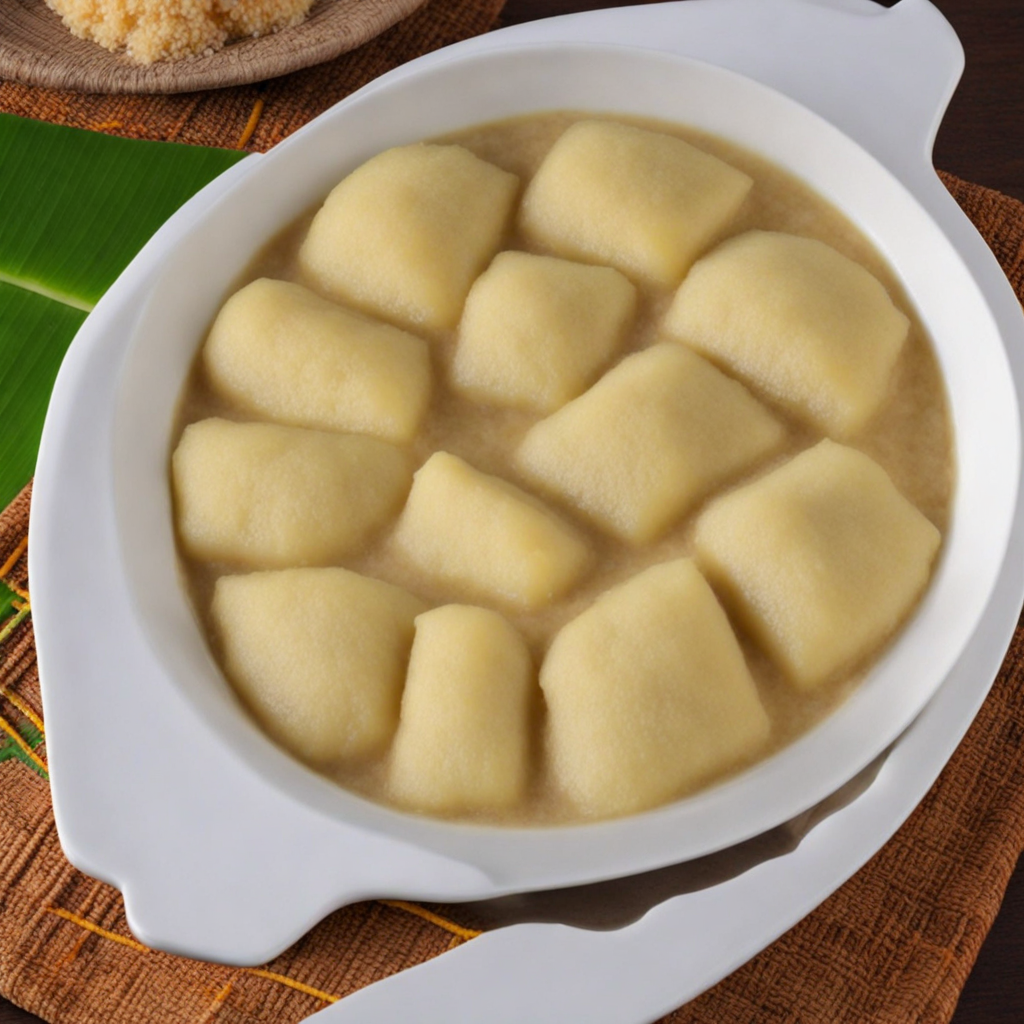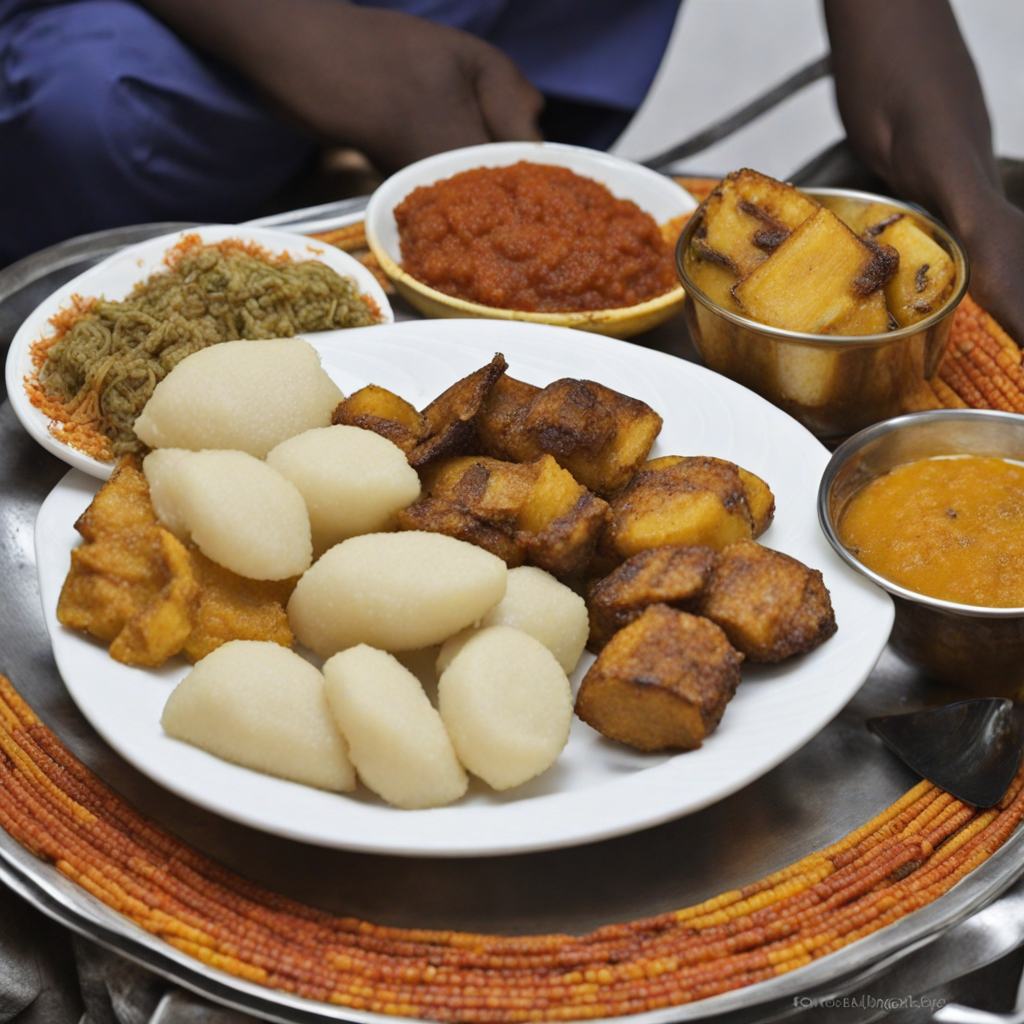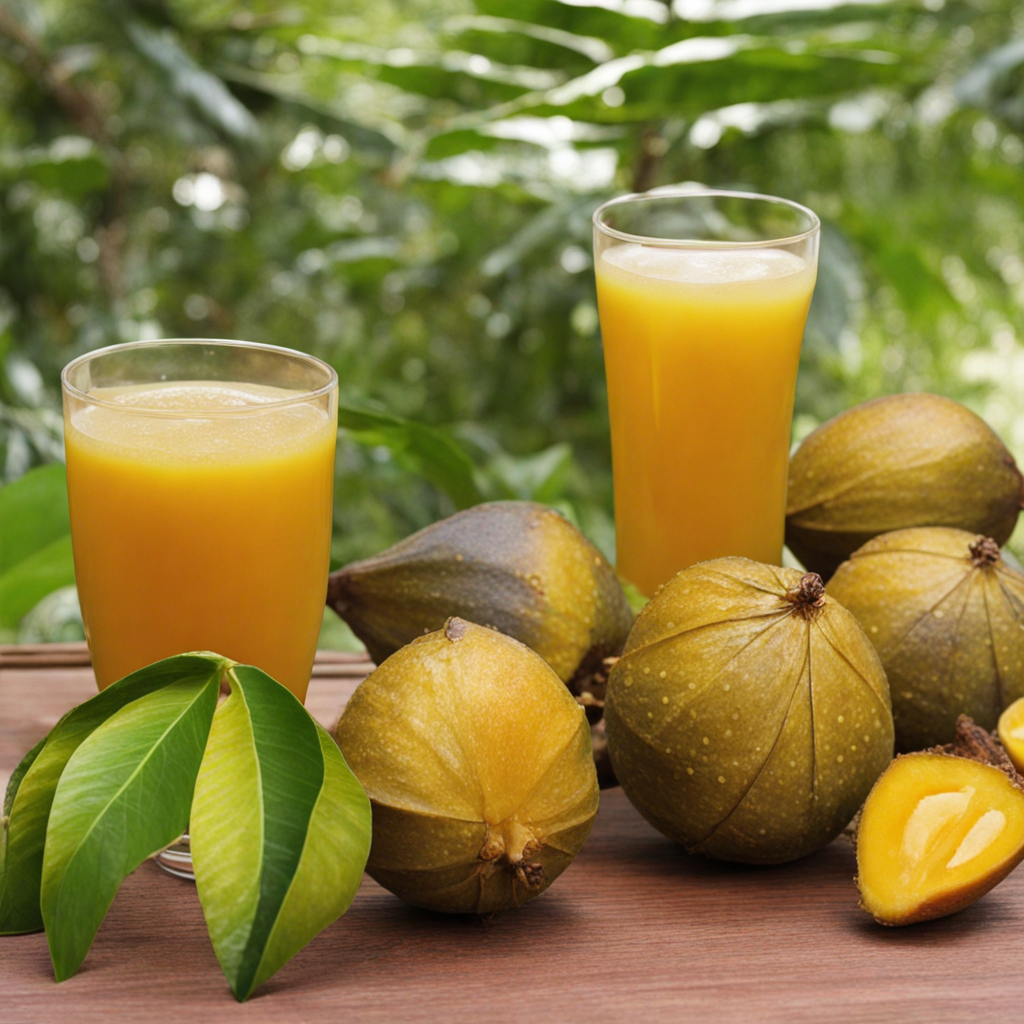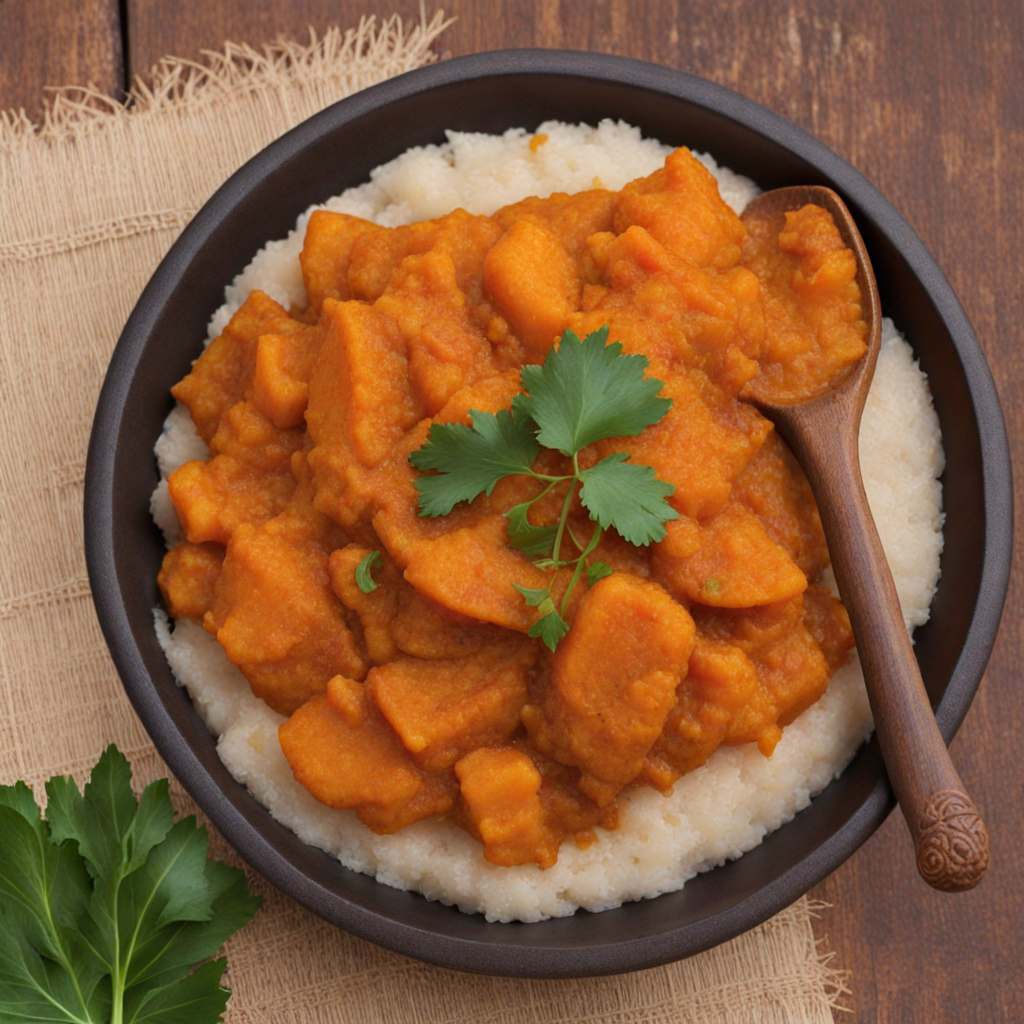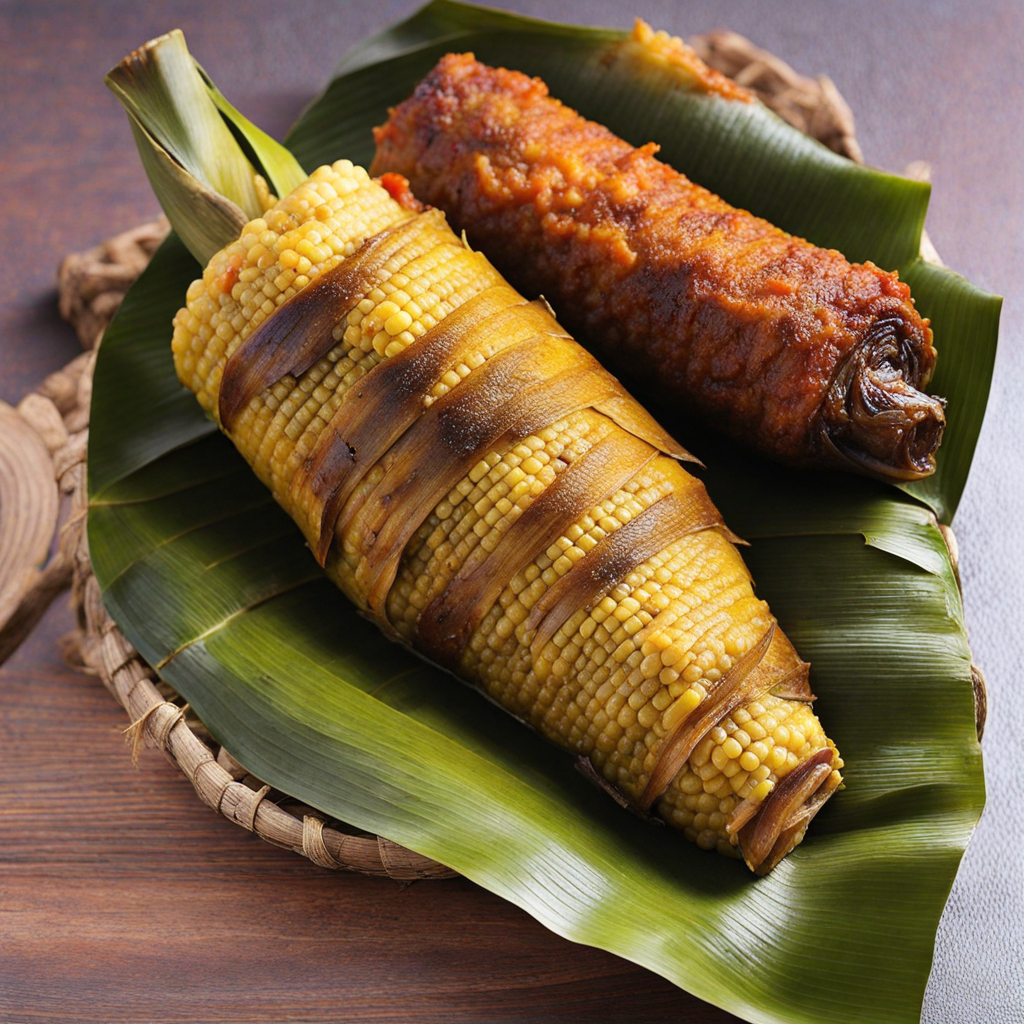Fufu
Fufu is a beloved staple in Ghanaian cuisine, made primarily from starchy foods such as cassava, yams, or plantains. The preparation process involves boiling these ingredients until they’re soft and then pounding them into a smooth, stretchy dough-like consistency. This labor-intensive method results in a texture that is both light and fluffy, allowing it to effortlessly absorb the flavors of accompanying soups and stews. Fufu is often enjoyed in large, pillowy chunks, which are typically shaped with the hands and served alongside a variety of rich, savory sauces. The taste of Fufu itself is subtle and neutral, acting as the perfect base to complement the bold and aromatic flavors of Ghanaian dishes. It has a slightly sweet undertone when made with cassava or plantains, and its unique texture provides a satisfying chewiness that enhances the overall eating experience. When paired with spicy soups like groundnut soup, light soup, or palm nut soup, Fufu transforms into a delicious vehicle for these complex flavors, allowing you to savor each bite and soak up the delectable broth. Traditionally, Fufu is served in communal bowls, encouraging a shared dining experience among family and friends. Eating Fufu often involves using fingers to pinch off pieces and dip them into the accompanying soup, creating a hands-on and engaging way to enjoy the meal. This dish not only showcases the rich culinary heritage of Ghana but also reflects the culture's emphasis on community and connection through food. Whether you’re a seasoned foodie or a curious newcomer, Fufu promises a delightful journey into the heart of Ghanaian culinary traditions.
How It Became This Dish
Fufu: A Culinary Journey Through Ghana’s Cultural Heritage Fufu, a staple food in Ghana, holds a significant place in the hearts and kitchens of its people. This traditional dish, made primarily from starchy foods such as cassava, yams, or plantains, embodies the rich culinary heritage and cultural identity of the Ghanaian people. Its history is intertwined with the agricultural practices, social customs, and communal values that have defined life in Ghana for centuries. Origins of Fufu The roots of fufu can be traced back to the early indigenous populations of West Africa, including the Akan people of Ghana. The word "fufu" is derived from the Akan language, which means "to mash" or "to pound." Traditionally, fufu was made by boiling the starchy ingredients until soft and then pounding them into a smooth, elastic consistency using a mortar and pestle, a process that requires both skill and strength. The choice of ingredients often varied based on regional availability. In coastal areas, for example, cassava was more common due to its abundance, while yam was preferred in the forested regions. This adaptability has allowed fufu to evolve over time, with different variations emerging across Ghana and the broader West African region. The versatility of fufu has also made it a canvas for various flavors, as it is often served with a variety of soups and stews. Cultural Significance Fufu is more than just a food; it is a symbol of community and togetherness. The preparation and consumption of fufu are deeply rooted in Ghanaian culture, often associated with family gatherings, celebrations, and significant life events. The communal aspect of eating fufu is particularly noteworthy; it is traditionally eaten with the hands, and diners often share from a common bowl, fostering a sense of unity and connection among family and friends. In Ghanaian society, fufu is often served during important ceremonies, such as weddings, funerals, and festivals. It is considered a dish of honor, reserved for special occasions and gatherings. In this context, fufu serves not only as sustenance but also as a means of expressing respect and hospitality towards guests. Its presence at these events underscores its role in social bonding and cultural identity. Moreover, fufu is often accompanied by rich, flavorful soups, such as light soup, groundnut soup, or palm nut soup. These pairings enhance the overall dining experience and reflect the diverse culinary traditions found throughout Ghana. The choice of soup can vary by region and even by household, showcasing local ingredients and cooking techniques. Development Over Time The preparation and consumption of fufu have evolved alongside Ghana’s historical and social changes. With the advent of colonialism in the late 19th and early 20th centuries, new ingredients and cooking methods were introduced to Ghanaian kitchens. The introduction of modern kitchen appliances, such as blenders and food processors, has transformed the traditional technique of pounding fufu. While some still prefer the authentic method of using a mortar and pestle, many have embraced these modern conveniences for their efficiency. As Ghanaian society has become increasingly urbanized, the way fufu is consumed has also changed. In urban centers, busy lifestyles have led to the rise of convenience foods, including ready-made fufu available in local markets and supermarkets. These pre-packaged options allow individuals and families to enjoy this beloved dish without the time-consuming preparation, making it accessible to a broader audience. Despite these changes, the essence of fufu has remained intact. It continues to be celebrated as a staple food that embodies Ghana’s cultural richness. In rural areas, traditional methods of making fufu are still practiced, preserving the age-old techniques and communal spirit that characterize its preparation. This duality—of maintaining tradition while adopting modernity—reflects the resilience of Ghanaian culture in the face of globalization. Fufu in the Global Context In recent years, there has been a growing interest in African cuisines around the world, and fufu has gained recognition beyond the borders of Ghana. As the diaspora grows, so too does the appreciation for traditional foods like fufu. Restaurants and food festivals celebrating West African cuisine have emerged in cities across the globe, introducing new audiences to this iconic dish. The global exposure of fufu has led to a reimagining of the dish in various culinary contexts. Chefs have experimented with different ingredients and flavor profiles, creating fusion dishes that incorporate fufu into diverse cuisines. This evolution showcases the adaptability of fufu and its ability to transcend cultural boundaries while remaining a cherished part of Ghana's culinary identity. Conclusion Fufu is more than just a meal; it is a cultural artifact that tells the story of Ghana's history, community, and resilience. From its origins among the Akan people to its place in contemporary society, fufu represents the intersection of tradition and modernity. Its preparation is a communal activity that brings people together, fostering bonds and celebrating shared heritage. As Ghana continues to navigate the complexities of globalization and urbanization, fufu remains a steadfast symbol of its culinary identity. Whether enjoyed in a bustling city or a rural village, fufu continues to nourish both the body and the spirit, serving as a reminder of the rich cultural tapestry that defines Ghana. In this way, fufu not only sustains its people but also preserves the stories and traditions that have shaped their lives for generations.
You may like
Discover local flavors from Ghana


